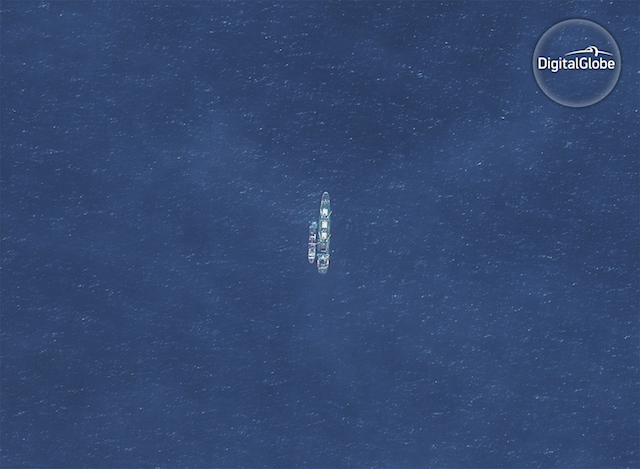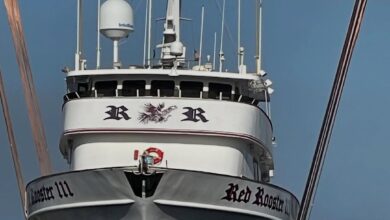Tech to the ocean’s rescue


As much as 20% of all caught fish is hauled from the water illegally, this damages economies and endangers marine ecosystems. But preventing illegally caught fish from your dinner table is almost impossible as its mixed with legal catch even when port security operates perfectly. For example, it’s possible for a fishing boat to transfer illicit cargo to a refrigerated vessel.
But this might be changing. Researchers at Global Fishing Watch, a partnership of Oceana, Sky Truth and Google, used for the first time data from the Automated Information System (AIS) to detect pairs of vessels meeting at sea. AIS is a ship to satellite systems that constantly transmit the ship’s location. Although not all ships use it, reefers do thus ships receiving illegally caught fish can be identified.
The results were obtained through an analysis of over 21 billion satellite signals from AIS messages. Kroodsma’s team used an artificial intelligence system developed by Global Fishing Watch which identified refrigerated cargo vessels based on their movement patterns. Then their results were verified with confirmed fisheries registries and open source online resources.
In the last 4 years (2012-2016) researchers found reefers participated in at least 5,000 likely transshipments and more found more than 86,000 potential transshipments. Additionally, the data shows transshipment is more common in regions with a high proportion of illegal unregulated and unreported fishing. Also, nearly two-thirds of all potential transshipments happened within the Russian Exclusive Economic Zone (EEZ), that extends 200 nautical miles from each country’s shores.
“These correlations do not provide any proof of specific illegal behavior,” said Global Fishing Watch Research Program Director, David Kroodsma, and lead author on the report, “but they raise important questions and can lead to more informed international efforts by fisheries management organizations to prevent or better regulate transshipment.”
More so, according to Oceana’s report three of the top eight countries visited by reefers have not yet ratified an international treaty meant to eliminate illegal, unregulated and unreported fishing, which could make it easier for illegally caught fish to enter the global marketplace. They call for the banning of transshipment at sea and expanding mandates for unique identifiers and vessel tracking.
But this isn’t the first time Global Fishing Watch uses satellites. For example, Project Eyes on the Sea marries AIS data with proprietary government data which enables states to directly intercede when they spot illegal fishing.
Although there’s still a long way from effective global enforcement projects like these provide routes to tackling the distribution of illegally caught fish.
“Global Fishing Watch is going to be transformative. It will really change the way we manage fisheries because we can see what’s happening instead of just trying to envision what’s out there on the water. We will know, and therefore, we can make smarter decisions,” said Dr. Jane Lubchenco, former Administrator at the National Oceanic and Atmospheric Association.
“Right now commercial fishers know that no one can actually see where they are and what they’re doing. And many of them abide by the rules, many of them do not. Global Fishing Watch is going to change that, because now somebody can be watching, purely and simply. We can see what they are doing and that’s going to make a big difference,” she concluded.
LatinAmerican Post | Maria Andrea Marquez




